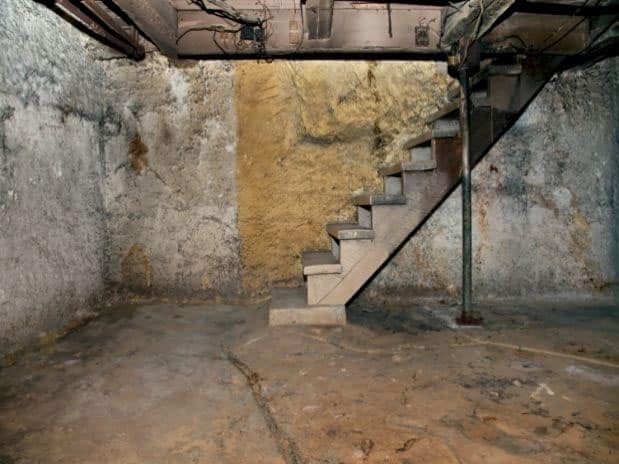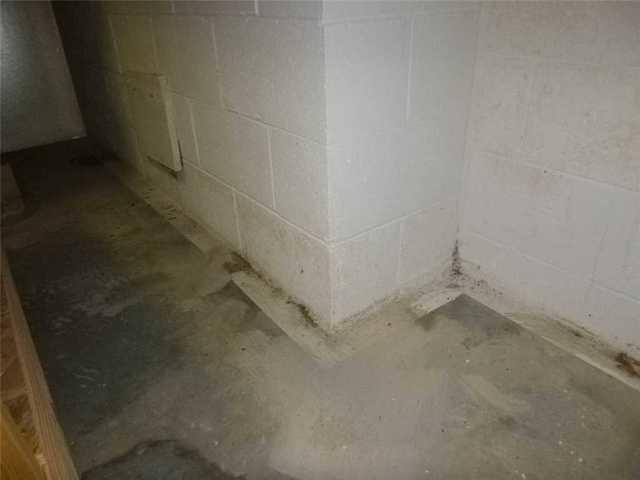Basements are a valuable part of many homes, providing additional living space, storage, and utility areas. However, they are also prone to water infiltration, which can lead to severe issues like structural damage, mold growth, and compromised indoor air quality. Basement waterproofing is essential to protect your home from these problems. This comprehensive guide will explore the importance of basement waterproofing, various methods available, and detailed steps to ensure a dry and safe basement environment.
Understanding the Importance of Basement Waterproofing
Basements are prone to water infiltration due to their below-ground location. Water can enter a basement through cracks in the foundation, seepage, or from high groundwater levels. The consequences of water intrusion include:

- Structural Damage: Continuous exposure to moisture can weaken the foundation, leading to cracks, shifting, and even collapse in severe cases.
- Mold and Mildew Growth: Moist environments are perfect breeding grounds for mold and mildew, which can cause respiratory problems and other health issues.
- Damage to Personal Belongings: Basements are often used for storage, and water infiltration can ruin stored items, furniture, and appliances.
- Decreased Indoor Air Quality: Mold spores and mildew can spread from the basement to other parts of the home, reducing indoor air quality.
- Increased Energy Bills: Moisture can compromise insulation efficiency, causing heating and cooling systems to work harder, thereby increasing energy costs.
Benefits of Basement Waterproofing
Investing in basement waterproofing offers numerous benefits:
- Protection Against Structural Damage: Waterproofing helps maintain the integrity of your home’s foundation, preventing costly repairs.
- Improved Indoor Air Quality: By eliminating mold and mildew growth, waterproofing enhances the air quality inside your home.
- Safeguarding Personal Belongings: Waterproofing protects your valuables from water damage.
- Energy Efficiency: A dry basement improves insulation efficiency, leading to lower energy bills.
- Increased Property Value: A well-maintained, dry basement makes your property more attractive to potential buyers, increasing its market value.
Types of Basement Waterproofing
There are several methods of basement waterproofing, each suited for different situations and varying in complexity and cost. These methods can be broadly categorized into interior and exterior waterproofing solutions.
Interior Basement Waterproofing
Interior waterproofing focuses on managing water that has already entered the basement. This approach is generally more affordable and less disruptive than exterior methods.
- Sealants and Coatings: Waterproof sealants and coatings are applied to the interior walls and floors to create a moisture barrier. These products are effective for minor leaks and dampness but may not suffice for significant water intrusion.
- Interior Drainage Systems: Systems like French drains and sump pumps are installed to collect and channel water away from the basement. These systems are often placed along the perimeter of the basement floor and direct water to a sump pit, where a sump pump expels it outside the home.
- Waterproof Membranes: Installing waterproof membranes on interior walls can prevent water from seeping through. These membranes are often used in conjunction with drainage systems for enhanced protection.
Exterior Basement Waterproofing
Exterior waterproofing aims to prevent water from entering the basement in the first place. This method is more comprehensive and typically involves significant excavation and construction work.
- Excavation and Waterproof Coatings: This process involves digging around the foundation and applying waterproof coatings or membranes to the exterior walls. These coatings act as a barrier, preventing water from penetrating the foundation.
- Exterior Drainage Systems: Installing exterior drainage systems, such as weeping tiles and perimeter drains, helps direct water away from the foundation. These systems reduce hydrostatic pressure and prevent water from accumulating around the basement walls.
- Proper Grading and Landscaping: Ensuring that the ground around your home slopes away from the foundation helps prevent water from pooling near the basement. Proper grading and landscaping are essential components of an effective exterior waterproofing strategy.
- Gutter and Downspout Management: Ensuring that gutters and downspouts are functioning correctly and directing water away from the foundation is crucial. Downspout extensions can be used to carry water further away from the home.
Advanced Waterproofing Materials
Using advanced materials can enhance the effectiveness of both interior and exterior waterproofing methods. These materials are designed to withstand various environmental conditions and provide long-lasting protection.
- Crystalline Waterproofing Agents: These agents penetrate the concrete and react with water to form crystals that fill the pores and cracks, effectively blocking water ingress.
- Rubberized Asphalt: This durable and flexible material is used for waterproofing exterior walls. It provides excellent protection against water infiltration and can withstand extreme temperatures and environmental conditions.
- Polymer Injection: Polymer injection involves injecting a liquid polymer into the soil around the foundation. The polymer hardens and forms a waterproof barrier, effectively sealing the foundation from external water sources.
Steps for Effective Basement Waterproofing
Effective basement waterproofing involves several key steps, regardless of the chosen method:
- Assessment and Inspection: Begin by inspecting the basement for signs of water infiltration, such as dampness, mold, or cracks. Identify the sources of water entry and assess the overall condition of the basement.
- Repair Cracks and Seal Openings: Use appropriate materials, such as hydraulic cement, epoxy injections, or caulk, to repair cracks and seal any gaps or openings in the basement walls and floor. This step is crucial to prevent water from seeping through.
- Install Drainage Systems: Depending on the assessment, install the necessary drainage systems, such as French drains or sump pumps, to manage water effectively. Ensure that these systems are properly maintained to function correctly.
- Apply Waterproof Coatings or Membranes: Apply waterproof coatings or membranes to the interior or exterior surfaces as needed to create a barrier against water infiltration.
- Maintain Proper Grading and Landscaping: Ensure that the ground around your home slopes away from the foundation. Proper grading and landscaping are essential to prevent water from pooling near the basement.
- Use Dehumidifiers: In areas with high humidity levels, use a dehumidifier to control moisture levels in the basement. This helps to prevent mold and mildew growth and maintain a dry environment.
- Regular Maintenance: Regularly inspect and maintain the waterproofing systems to ensure they remain effective. This includes cleaning and servicing sump pumps, checking drainage systems, and reapplying sealants as necessary.
Choosing the Right Waterproofing Solution

The choice of basement waterproofing method depends on several factors, including the extent of water infiltration, the condition of the basement, and budget considerations. In some cases, a combination of interior and exterior solutions may be necessary to achieve the best results.
DIY vs. Professional Waterproofing
While some waterproofing tasks can be handled by homeowners, such as applying sealants or installing basic drainage systems, more complex projects may require professional expertise. Hiring a professional waterproofing contractor ensures that the job is done correctly and provides peace of mind that your basement is protected against water damage.
Common Waterproofing Issues and How to Address Them
Even with the best waterproofing measures, problems can still arise. Here are some common waterproofing issues and how to address them:
- Persistent Dampness: If your basement remains damp despite waterproofing efforts, it may be due to inadequate ventilation. Ensure that the basement is properly ventilated and consider using a dehumidifier to control moisture levels.
- Water Stains on Walls: Water stains on basement walls indicate that water is still entering the space. Check for any cracks or openings that may have been missed during the initial waterproofing process and seal them promptly.
- Mold and Mildew Growth: Mold and mildew growth can occur if moisture levels are not adequately controlled. Regularly inspect the basement for signs of mold and use dehumidifiers to maintain a dry environment.
- Flooding: If your basement floods during heavy rains, it may indicate that your drainage system is insufficient. Consider upgrading your drainage system or adding additional measures, such as a sump pump, to manage water more effectively.
- Foundation Cracks: Foundation cracks can allow water to enter the basement and compromise the structural integrity of your home. Repair any cracks promptly using appropriate materials, such as hydraulic cement or epoxy injections.
Basement waterproofing is essential for maintaining a dry, safe, and healthy home environment. By understanding the different waterproofing methods available and following the necessary steps, homeowners can protect their basements from water infiltration and the associated problems. Whether opting for interior or exterior waterproofing, or a combination of both, taking proactive measures to protect your basement is a wise investment in the longevity and health of your home. Don’t wait for water damage to become a significant issue—start waterproofing your basement today to ensure it remains a safe and comfortable place for you and your family.
Contact the Professionals at EverDry Waterproofing of Michiana Today! 574-272-3788

Matt Kaminsky, the owner of Everdry Waterproofing, has established himself as a distinguished leader in the waterproofing industry. Under Matt’s stewardship, Everdry Waterproofing has flourished, becoming synonymous with excellence in providing waterproofing solutions that stand the test of time. His commitment to innovation, combined with a rigorous emphasis on customer satisfaction, has positioned Everdry Waterproofing as a top choice for homeowners seeking reliable and effective waterproofing services. Matt’s expertise and dedication to quality have not only propelled his company forward but have also contributed significantly to raising standards within the waterproofing sector. For more insights into Matt Kaminsky’s approach and the services offered by Everdry Waterproofing, you can visit their website at everdry-waterproofing.com.
